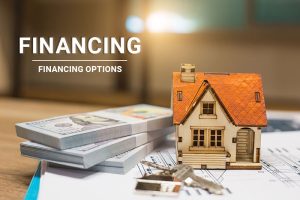
Dreaming of owning a second property in Australia? Whether you’re looking to expand your investment portfolio or simply want a holiday getaway, using your home equity can make that dream a reality. But how does equity work when buying a second home? In this blog post, we’ll help you navigate the world of equity, guiding you through the process step by step so you can confidently make the right decisions for your financial future.
We’ll delve into the importance of understanding home equity, calculating and accessing your available equity, financing options, increasing your home equity, key considerations, and potential risks, and even provide a case study that brings it all together. So buckle up and let’s dive into the exciting world of using home equity to purchase your second property!
Key Takeaways
- Tap into home equity to access funds and increase wealth when buying a second property.
- Calculate your usable equity by determining the market value of your property and consulting an expert.
- Take advantage of strategies such as renovations, extra mortgage payments, offset accounts, and refinancing for successful second property purchases!
Understanding Home Equity and Its Role in Buying a Second Property
 The difference between your property’s market value and outstanding debt, known as home equity, significantly influences the process of purchasing a second property. Leveraging your home equity can be a fantastic way to invest in a second property and potentially generate rental income, while also considering the property value.
The difference between your property’s market value and outstanding debt, known as home equity, significantly influences the process of purchasing a second property. Leveraging your home equity can be a fantastic way to invest in a second property and potentially generate rental income, while also considering the property value.
But what’s the best approach to fully capitalize on your home equity? To get to the bottom of this, we need to clarify what home equity is and explore its benefits in the context of buying a second property.
Defining Home Equity
Home equity represents the portion of your property that you own outright and is calculated by subtracting the outstanding loan amount from the property’s market value, which includes your existing home loan. In other words, it’s the share of your property that you’ve already paid off, and it’s a valuable asset that can be leveraged to:
- Buy a second property
- Renovate your current property
- Consolidate debt
- Pay for education expenses
- Cover medical bills or emergencies
By tapping into your home equity, you can access funds for various purposes and potentially increase your overall wealth.
Using home equity to purchase a second property can be a great way to build wealth and diversify.
The Benefits of Using Home Equity
Using home equity to buy a second property can provide several financial benefits. First, you can avoid the need for a cash deposit, as the equity in your existing property can serve as a deposit for the new property. Another advantage is the potential to save on lender’s mortgage insurance (LMI), which is typically required if you borrow more than 80% of your property’s market value.
Moreover, by leveraging your home equity, you can improve your cash flow by generating rental income from the first property. This can ultimately help you build wealth and create a consistent passive income stream.
How to Calculate and Access Your Available Equity
 Having grasped the significance of home equity, you might be wondering how to determine its value and utilize it for your second property purchase. Here are the steps you can take.
Having grasped the significance of home equity, you might be wondering how to determine its value and utilize it for your second property purchase. Here are the steps you can take.
- Determine your property’s market value.
- Calculate your usable equity.
- Consult with a financial expert to access your home equity. By following these steps, you can make an informed decision about whether using home equity for a second property is right for you.
Let’s dissect these steps to guide you in maximizing your home equity.
Determining Your Property’s Market Value
 The first steps to determining your available equity involves estimating your property’s market value. To do this, you can research recent sales in your area and consult with a real estate agent or property valuer. These professionals can provide you with an accurate assessment of your property’s market value, helping you gauge how much equity you have at your disposal.
The first steps to determining your available equity involves estimating your property’s market value. To do this, you can research recent sales in your area and consult with a real estate agent or property valuer. These professionals can provide you with an accurate assessment of your property’s market value, helping you gauge how much equity you have at your disposal.
Calculating Usable Equity
Once your property’s market value is figured out, it’s possible to compute your usable equity. To do this, simply take 80% of your property’s market value and subtract any outstanding debt.
This will give you an accurate picture of the equity you can potentially use to purchase a second property.
Accessing Your Equity
Once your usable equity is computed, the next step is to utilize it. Consulting with a mortgage broker or a home lending specialist can help you understand your borrowing power and the best financing option for your needs. They can also assist you in structuring your loan and maximizing your tax deductions, ensuring that you’re making the most of your equity.
Collaborating with professional guarantees that you’re utilizing your equity to its full potential.

Financing Options for Using Home Equity to Buy a Second Property
 Numerous financing options are available if you’re considering using home equity to buy a second property, each with unique benefits and considerations. These options include refinancing your existing mortgage, line of credit loans, and cross-collateralisation. It’s essential to compare interest rates and loan terms to find the best financing option for your unique situation.
Numerous financing options are available if you’re considering using home equity to buy a second property, each with unique benefits and considerations. These options include refinancing your existing mortgage, line of credit loans, and cross-collateralisation. It’s essential to compare interest rates and loan terms to find the best financing option for your unique situation.
A detailed exploration of these financing options will empower you to make an informed decision that aligns with your needs.
Refinancing Your Existing Mortgage
Refinancing your existing mortgage allows you to:
- Access your equity
- Potentially secure a better interest rate
- Take advantage of a new loan and borrow money you’ve already repaid
- Potentially lower interest payments
This can be especially beneficial if you have enough equity to cover the entire purchase of the second property plus stamp duty costs and other expenses.
Line of Credit Loans
You can access a set level of credit depending on your home equity using line of credit loans. This type of loan provides you an opportunity to credit funds as needed. These loans work similarly to a credit card, allowing you to withdraw funds as needed and only pay interest on the amount borrowed.
While line of credit loans can offer more attractive interest rates than traditional home loans, they may come with higher interest rates and increased debt compared to home loan repayments, making them a less favorable option for those seeking an investment loan.
Cross-collateralization
Cross-collateralisation involves using the equity in your current property as security for a loan on a second property. While this strategy can offer competitive interest rates, it can also restrict your choices in the future and may require a reassessment of your new home’s value if you plan to sell your current property.
Because of its potential risks, it’s essential to carefully consider cross-collateralisation before using it to finance your second property purchase.
Comparing Interest Rates and Loan Terms
Comparing interest rates and loan terms is crucial to finding the best financing option for your situation. Take the time to research different lenders and loan products, and be sure to consider the annual percentage rate (APR), annual percentage yield (APY), and any fees or penalties associated with each loan.
By carefully weighing your options, you’ll be better equipped to make the right decision for your second property purchase.
Increasing Your Home Equity for a Second Property Purchase
 Having learned how to determine and utilize your available equity, our next step is to explore strategies for its growth, thereby making your second property purchase even more achievable. By undertaking home renovations and improvements, making extra mortgage payments, and using an offset account, you can boost your home equity and get closer to your dream of owning a second property.
Having learned how to determine and utilize your available equity, our next step is to explore strategies for its growth, thereby making your second property purchase even more achievable. By undertaking home renovations and improvements, making extra mortgage payments, and using an offset account, you can boost your home equity and get closer to your dream of owning a second property.
Here’s a detailed examination of these strategies to guide you in optimizing your home equity.
Home Renovations and Improvements
Home renovations and improvements can have a significant impact on your property’s value and equity. By investing in well-planned projects, such as updating kitchens and bathrooms, adding a room, or improving curb appeal, you can potentially increase your property’s market value.
However, be sure to carefully consider the costs and potential returns of any renovation projects before undertaking them.
Extra Mortgage Payments and Offset Accounts
Making extra mortgage payments and using an offset account can help you pay off your loan faster and increase your available equity. By making additional payments or setting up an offset account linked to your mortgage, you can reduce your overall interest charges, allowing you to build equity more quickly and potentially avoid the need to pay lender’s mortgage insurance.
This strategy can be especially effective if you’re looking to purchase a second property sooner rather than later.
Key Considerations and Potential Risks When Using Equity to Buy a Second Home
 While using equity to buy a second property can be a thrilling venture, it’s important to remain cognizant of the key considerations and potential risks it entails. By assessing your financial situation, diversifying your property portfolio, and managing increased debt and loan repayments, you can better prepare yourself for the challenges and rewards of using equity to purchase a second property.
While using equity to buy a second property can be a thrilling venture, it’s important to remain cognizant of the key considerations and potential risks it entails. By assessing your financial situation, diversifying your property portfolio, and managing increased debt and loan repayments, you can better prepare yourself for the challenges and rewards of using equity to purchase a second property.
A deeper investigation of these key considerations and potential risks will assist you in making an informed decision regarding the use of equity for your second property purchase.
Assessing Your Financial Situation
Before using equity to buy a second property, it’s crucial to assess your financial situation and ensure that you can afford the increased debt and loan repayments. This includes evaluating your income, other financial obligations such as credit cards and car loans, and your ability to pay back the debt.
By carefully examining your finances, you can determine whether using equity for a second property purchase is a viable option for you.
Diversifying Your Property Portfolio
Diversifying your investment property portfolio is a smart strategy when using equity to buy a second property. By investing in different types of properties, locations, and property sizes, you can spread risk and maximize potential returns.
Additionally, diversification can provide you with tax benefits and capitalize on potential capital growth, further enhancing your investment.
Managing Increased Debt and Loan Repayments
When using equity to buy a second property, be prepared to:
- Manage increased debt and loan repayments
- Create a budget
- Find ways to boost your income
- Reduce costs to ensure you can comfortably handle the additional financial responsibility.
By proactively addressing these challenges, including property management fees, you can set yourself up for success in your second property purchase.
Case Study: Successfully Using Home Equity to Purchase a Second Property
 To exemplify the successful utilization of home equity in purchasing a second property, let’s examine a case study. Karen, a homeowner in Australia, wanted to buy a second property as an investment. She understood the importance of home equity and sought professional help to calculate her usable equity. By refinancing her existing mortgage, Karen was able to access her equity and purchase a second property, ultimately generating rental income and expanding her investment portfolio.
To exemplify the successful utilization of home equity in purchasing a second property, let’s examine a case study. Karen, a homeowner in Australia, wanted to buy a second property as an investment. She understood the importance of home equity and sought professional help to calculate her usable equity. By refinancing her existing mortgage, Karen was able to access her equity and purchase a second property, ultimately generating rental income and expanding her investment portfolio.
This case study underscores the significance of grasping the concept of equity, computing usable equity, and selecting an appropriate financing option when leveraging home equity to purchase a second property. By following these steps and carefully considering the potential risks and rewards, you too can successfully use your home equity to achieve your property goals.
Summary
In conclusion, using home equity to purchase a second property in Australia can be a rewarding and financially beneficial endeavor. By understanding home equity, calculating and accessing your available equity, exploring financing options, increasing your home equity, and considering potential risks, you can make an informed decision about whether using equity for a second property purchase is right for you.
Remember, the key to success lies in planning, preparation, and seeking professional advice. With the right knowledge and mindset, you can confidently embark on the exciting journey of using home equity to purchase your dream second property.
Frequently Asked Questions

Is it worth using equity to buy a second home?
Utilizing the equity from your current property can be a great way to access funds for buying a second home. This can help you become an investor or purchase your dream holiday house without having to save up another cash deposit.
Leveraging your equity can be a great way to improve your financial situation.
How does equity work on a second home loan?
With a second home loan, you should aim for a 20% deposit and your usable equity is 80% of the current value of your home, minus what you still owe on the loan.
This can help you make your dreams of owning a new property come true!
How much equity can you use for the second property?
It is recommended to put a 20% deposit towards your new property.
Your usable equity for the second property is 80% of the current value of your home, minus what you owe on the loan.
How to buy a second property without equity?
You can purchase a second property without equity by obtaining a guarantor for your home loan – this way, you can access up to 100% of the property’s value.
However, guarantors are most commonly used with first home buyers or low-income earners.
How do I calculate my usable equity?
To calculate your usable equity, take 80% of your property’s market value and subtract any outstanding debt – that way, you can get an accurate understanding of the equity available to you.
This is a useful tool for anyone looking to access the equity in their home, as it can help you determine how much you can borrow and how much you can use for other investments.












